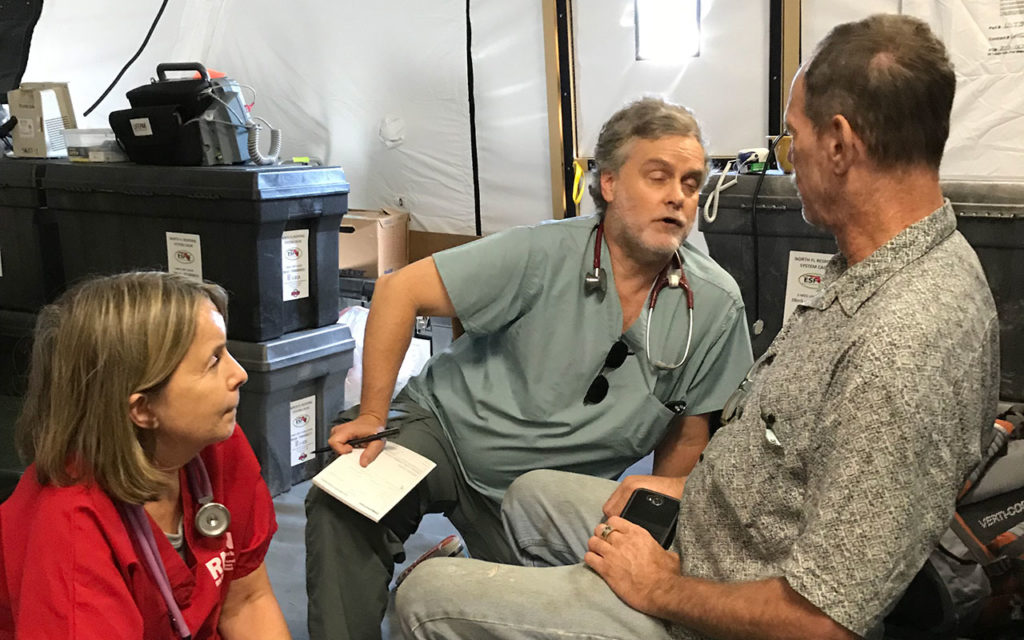When Donald Cribley decided it was time to seek treatment for his swollen right hand a week after Hurricane Michael tore through his home town of Chattahoochee in an economically stressed rural corner of the Florida Panhandle, his options were limited.
With the area still reeling from the storm’s destruction and public services struggling to return to normal, he said there was only one real choice: an International Medical Corps clinic, set up in the storm’s aftermath to treat survivors in an open field near the Intersection of US 90 and the town’s main street. Initially open around the clock, by the time Donald arrived, the clinic had adjusted its hours to be open from 7:00 a.m. to 10:00 p.m.
“It’s a relief that you’re here,” his wife, Tamara, told the clinic staff. “We didn’t have any place else to go.”
Like the majority of those who came to the clinic for treatment on this day, Cribley’s injury was not especially serious—it was diagnosed as a bite from one of a growing population of large insects indigenous to the Panhandle that has thrived in the standing water of Michael’s aftermath. These pests suddenly found it easy to prey on Chattahoochee’s residents, who had been living for days in homes where a lack of electricity—and, thus, air conditioning—meant windows left open to welcome any breeze that would provide relief from the area’s warm, humid climate.
“We lost power for six days,” Cribley said. “It came back yesterday.” He noted the family home was damaged but still habitable—although he was keeping an eye on the roof, fearing it might leak when the next big rain comes.
Before the day was out, the International Medical Corps team—which had split into day and night shifts—had treated other local residents for a variety of problems, including head and foot trauma, headaches, ear aches, high blood pressure and stress-related symptoms, most likely related to the difficulty of living amid the destruction caused by Hurricane Michael’s aftermath: power outages, blocked roads, damaged homes and the debris from huge trees snapped in half by the 155-mph winds. And if the patients needed it, they helped heal the soreness, swelling and even infections that can accompany insect bites.
